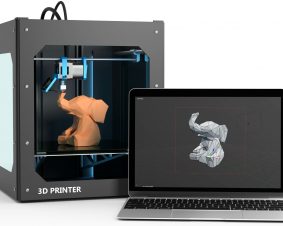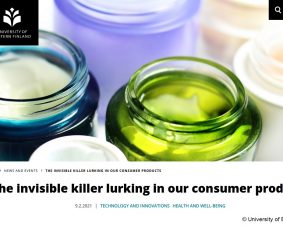 >
Spotlight August 2020: The nanoGRAVUR Grouping approach
>
Spotlight August 2020: The nanoGRAVUR Grouping approach
In August, we would like to present a paper of the German BMBF project nanoGRAVUR. nanoGRAVUR dealt from 2015-2018 with the grouping of nanostructured materials with regard to occupational safety, consumer and environmental protection and risk mitigation. The approach is now described by the project partners in this paper.
Due to the variety of synthetic nanomaterials and the numerous modifications (differences in size, shape, chemical composition and surface functionalization), the effort required to investigate effects and behaviour within the framework of regulatory requirements is enormous. Given the variability of possible effects, it is almost impossible to examine the potential risk for each nanomaterial on a case-by-case basis. Grouping or analogy now aims to allow a reliable prediction of hazards from nanomaterials of a group without additional testing by identifying certain properties or parameters.
For each of the three different areas of occupational, consumer and environmental safety, different groups may emerge, but they are based on a harmonised set of material properties with specific analytical methods, descriptors and areas. Proof of concept is provided in this publication by quantitative data on 34 case studies.
Original Publication:
Wohlleben, W, Hellack, B, Nickel, C, Herrchen, M, Hund-Rinke, K, Kettler, K, Riebeling, C, Haase, A, Funk, B, Kühnel, D, Göhler, D, Stintz, M, Schumacher, C, Wiemann, M, Keller, J, Landsiedel, R, Broßell, D, Pitzko, S, Kuhlbusch,T (2019), The nanoGRAVUR framework to group (nano)materials for their occupational, consumer, environmental risks based on a harmonized set of material properties, applied to 34 case studies. DOI 10.1039/c9nr03306h

Weitere Spotlights
Spotlight June 2022: From small to clever – What does the future hold for the safety and sustainability of advanced materials?
The smallest particles in materials research, nanoparticles, have occupied us intensively for more than 20 years to elucidate and further investigate their safety for humans and the environment. Now, however, the development is going from “small = nano” to “clever = advanced”, as discussed in a contribution by international scientists. Thereby, it is a great […]
Read moreSpotlight November 2023: Early Awareness and Action System for Advanced Materials (Early4AdMa)
Advanced materials hold immense potential to address global challenges such as environmental degradation, transformation of the energy sector, and development towards circularity. To harness their benefits while ensuring safety and sustainability, regulatory bodies, scientific communities, and industries have recognized the need for proactive approaches. The “Early4AdMa” system is a pre-regulatory risk governance tool for advanced […]
Read moreSpotlight April 2021: Nanomaterials and Fake News – a commentary based on an example
In February 2021, the article “The invisible killer lurking in our consumer products” appeared, describing nanoparticles as a greater danger than Corona [1]. “The use of nanomaterials” would be “unregulated” and “nanomaterials are so small that they cannot be determined once they are part of a product”. So what is the truth of these statements? […]
Read moreSpotlight March 2021: Is Nanotechnology the Swiss Army Knife against Future Pandemics?
The COVID 19 outbreak has led to a fundamental rethinking of existing approaches to diagnosis, treatment, and prevention methods. The need for better and more efficient concepts is global and urgent. Nanotechnology has long been at the forefront of innovation and has led to advances in many different disciplines. Could this interdisciplinary field help develop […]
Read more


